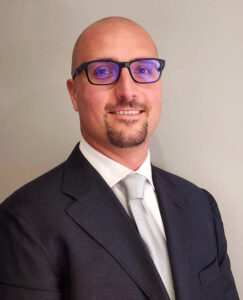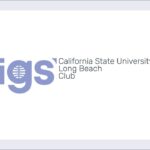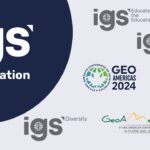
Last month the IGS launched its exciting strategy plan for the next four years. The Strategy Report 2022-2026 sets out ambitious targets for the years ahead to help make the IGS more wide-reaching, inclusive and financially robust for the future.
To achieve its vision, the Society has four strategic goals – to be Influential, Trusted, Representative, and Sustainable. In a series of articles, we will take a deep dive into each strategic goal and explore the aims, approach and outcomes of each goal.
Here, IGS Vice President Edoardo Zannoni explains more about why being ‘Influential’ is one of the Society’s key objectives.
Hello Edoardo, please tell us a bit more about the aims for this goal.
We have four main aims – to influence policies and practices to boost the use of geosynthetics, to forge greater links with non-engineering organizations, leverage existing relationships with sister societies, and increase the impact IGS Chapters have on regulators, standards and universities.
How will you achieve these?
Relationship is the key. We have more than 2,500 members across the world and each and every one of them is linked to a local organisation, university or government agency. If one per cent of them engage on sharing the incredible benefit geosynthetics brings to our society, it means that we will have 30 opportunities to share this amazing journey with others.
Of course, everything needs focus and we are working to develop the list of the most important organizations we should be concentrating on which will give us the best return, and provide meaningful partnerships to solve global issues such as climate change. We must also try to override the fear of the unknown; we like to hang around with people similar to us, however in being influential, we must reach out to unexplored territories which will bring a different skillset to the IGS, and we need to be ready for it.
What does ‘Influential’ mean and why is this important?
For the IGS, influential means being able to have a solid and reputable framework (the numbers and our successes speak for themselves), which we are able to bring to the highest level of decision-making. The long-term goal would be to have geosynthetics as part of the most challenging decision-making we, as a Society, are going to face to make this world better.
Successfully engaging in those forums at the right level will set in motion a flywheel for geosynthetics which will take the IGS with it in a growing spiral.
How will you measure how Influential the IGS is?
There are several indicators. These are:
- International regulators mandate the use of geosynthetics
- Use of geosynthetics is unrestricted
- Formal agreements with non-engineering organizations
- Joint statements on specific issues
- Engagement with regulators at local level
- Number of sessions of non-geosynthetic topics included in IGS/Chapter conferences, workshops etc
- Number of sessions on geosynthetics included in non-geosynthetic conferences, workshops etc
- An Educate the Regulators program
I think the first step would be to create relationships, therefore establishing formal agreements (item 3 and 4) is a natural step in building relationships and becoming influential, followed by creating platforms of engagement (item 6 and 7). Once this is in place the results will be an increase on the use of geosynthetics (item 2) through further education programmes (item 8) and lastly reaching out to the regulators both locally and internationally (1 and 5) from the work done across a multi-disciplinary approach.
Tell us a bit more about ‘Educate the Regulators’. Is there a timeline for this?
We have set in motion several technical programmes such as the Geosynthetics Handbook and Did You Know… series, and we can confidently say the Educate the Educators (EtE) program has been a success over the past 10 years. However, we need to keep on reaching out, towards the unknown and the next step is launching Educate the Regulators (EtR). EtR follows the style of EtE in that we will provide teaching sessions and materials for regulator bodies so they better understand the potential of geosynthetics in many use cases.
We have set development to begin in this term of office with expected launch towards 2026.
What would success look like by 2026? Where would you like to see the IGS in terms of influence by this time?
The sky is the limit! Our aims look like skyscrapers at the moment but I’m confident our influence will continue to grow. By 2026 I see the IGS having solid relationships with key organisations and an established relationship with a set forum of engagement such as the Federation of International Geo-Engineering Societies (FedIGS).
How does ‘Influence’ work with the IGS’s other three strategic goals?
To be Influential, you must be Trusted. When having influential plans which could span more than 10, 20 years, these require Sustainability within the IGS to be able to support and grow as our circle of influence grows, which will result in being more Representative as we grow.
How can members support these aims?
Our members are the number one influencer. Every time a geosynthetic is shared to be the solution, the appropriate solution, the IGS becomes more influential. I’d urge member to keep on talking about geosynthetics, use geosynthetics appropriately and who knows how we can change the world for the better.
+++ Learn more about the IGS’s strategic aims by reading the ‘Strategy 2022-2026 Building On Firm Foundations’ report here. If you have any questions or would like more information about the report, contact IGS Executive Director John Kraus at john.kraus@geosyntheticssociety.org.






















